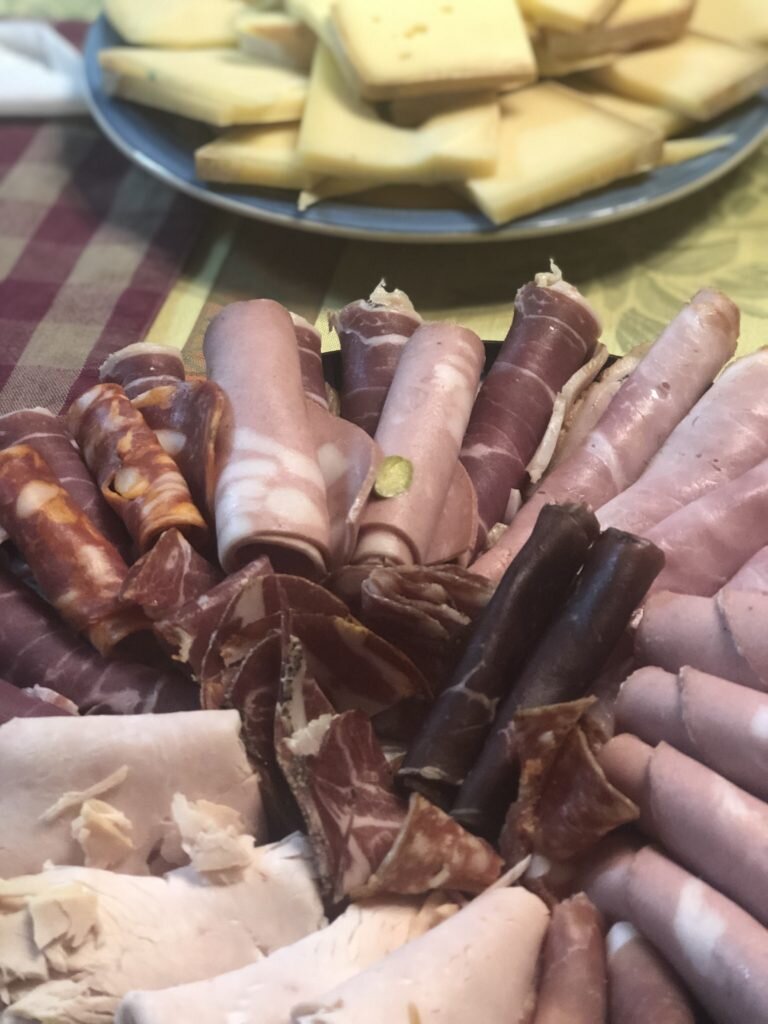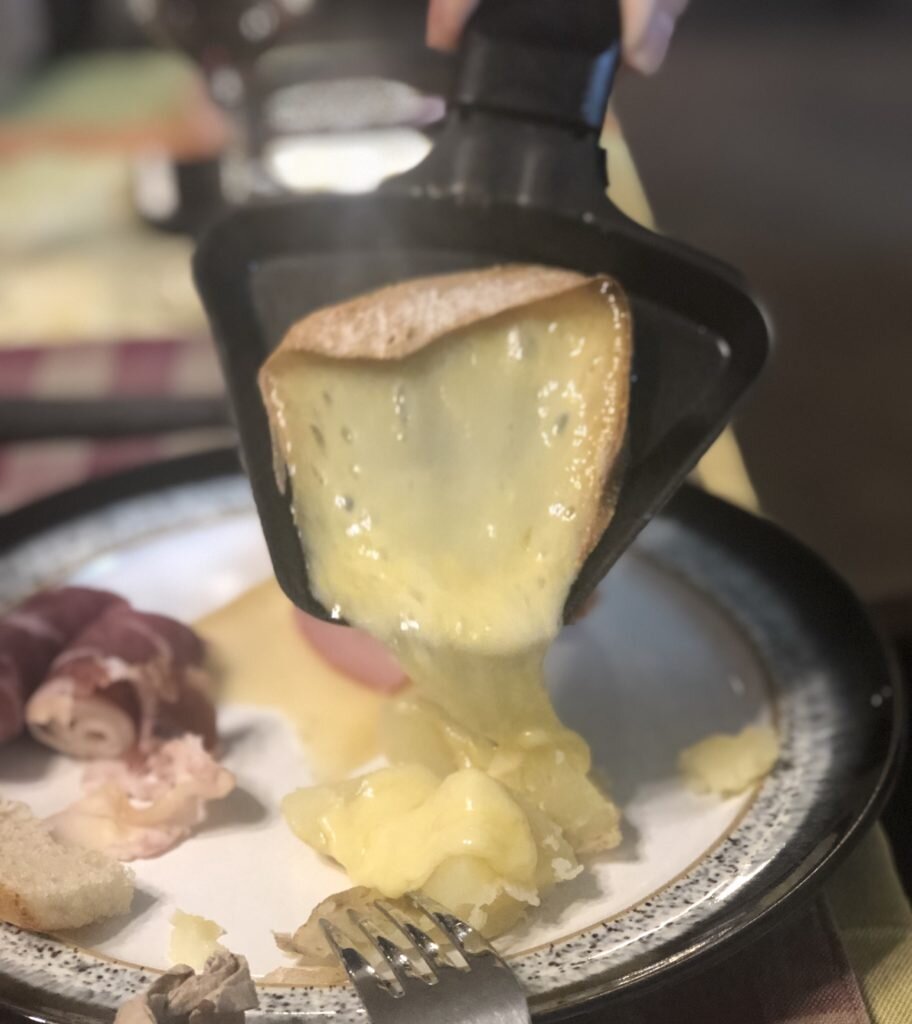Raclette
"The pleasure of the table belongs to all ages, to all conditions, to all countries, and to all areas; it mingles with all other pleasures, and remains at last to console us after their departure."
–Jean Anthelme Brillat-Savarin
I hope everyone had a lovely Thanksgiving. And maybe you’re expecting me to write about Thanksgiving but I’m not. I'm writing about raclette, a Swiss dish consisting of primarily boiled potatoes, cured meats—prosciutto, salami, mortadella, etc.— and, pickles. But it is so much more a process, an event, than simply a dish. Friday after Thanksgiving, I had the joy of experiencing it again.Raclette has been mentioned in medieval writings as early as 1291; apparently Swiss-German monks enjoyed this rich dish in the cold winters of the Alps. It is believed to originate in the regions of Valais in Switzerland and Savoie and Haute-Savoie in France; all in the Alps. The raclette cheese itself is a semi-hard cow’s milk cheese and made in rounds of 6 kg (a little over 13 lbs.). Traditionally, the round of cheese was cut in half and placed by the hearth or fire and once the exposed layer of cheese melted, it was scraped over one’s dish of potatoes, meat, and pickles. The dish is called Bratchäs, Swiss-German for roasted cheese. The French word for the dish, raclette, comes from the French verb racler which means to scrape, as you can imagine scraping the melted cheese onto your potatoes and meat.After Thanksgiving, I drove to my brother and sister-in-law’s house with my mom. Some friends met us there, too and Friday night we prepared and feasted on a raclette.The beauty of raclette—other than the obvious fact that melted cheese is one of the most beautiful phenomena in the gastronomic world—is that it’s a process. Each diner has their own small tray for melting the raclette cheese by the heating oven in the center of the table. You have to wait for the cheese to melt and once it has melted, you assemble your food. The potato…cut nicely or smashed with the back of your fork; the meat laid out, multiple cuts of meat or all mortadella; and the melted cheese drizzled on top. And then you can’t just devour your food, you savor it, a few bites of raclette and a sip of wine, and then it’s your turn to participate in the conversation while your next round of cheese melts to your liking. Before you know it, hours have gone by in contented bliss, your belly is full, and life is good.
 One thing my French friend, Franck, noted about Thanksgiving that he has observed now being in the US for 11 years is that it is essentially the most important meal of the year for Americans. People fly or drive or hours to be with their families and share this huge meal. But what he doesn’t understand is the fact that people spend hours, maybe even days, preparing the meal but is it devoured in 30-45 minutes. He compared this to French meals where meals are eaten at a much slower pace. You take your first course, tell stories, jokes, catch up, and then clear the plates, and prepare the second course. Then a third, and so on. There isn’t a demanding expectation that everything be served at once and hot. Yes, food is served hot but it can be heated in between courses, by the host with help from a guest or two.I am guilty of this, as well. I find myself eating quickly as though mealtimes are timed events. They are not. Especially on a day like Thanksgiving. We have the day off (most of us) to be with our families and maybe watch a movie, play games, talk, joke, or simply be. So why not linger around the table a bit longer. Help the host prepare the meal and savor each bite, each course, and the meal in its entirety, at a casual pace.I wish lovely meals with family and friends for everyone this holiday. I hope that we all take the time to enjoy our meal, the company, and the process that is the pleasure of the table. Here’s to the start of the holiday season!
One thing my French friend, Franck, noted about Thanksgiving that he has observed now being in the US for 11 years is that it is essentially the most important meal of the year for Americans. People fly or drive or hours to be with their families and share this huge meal. But what he doesn’t understand is the fact that people spend hours, maybe even days, preparing the meal but is it devoured in 30-45 minutes. He compared this to French meals where meals are eaten at a much slower pace. You take your first course, tell stories, jokes, catch up, and then clear the plates, and prepare the second course. Then a third, and so on. There isn’t a demanding expectation that everything be served at once and hot. Yes, food is served hot but it can be heated in between courses, by the host with help from a guest or two.I am guilty of this, as well. I find myself eating quickly as though mealtimes are timed events. They are not. Especially on a day like Thanksgiving. We have the day off (most of us) to be with our families and maybe watch a movie, play games, talk, joke, or simply be. So why not linger around the table a bit longer. Help the host prepare the meal and savor each bite, each course, and the meal in its entirety, at a casual pace.I wish lovely meals with family and friends for everyone this holiday. I hope that we all take the time to enjoy our meal, the company, and the process that is the pleasure of the table. Here’s to the start of the holiday season!